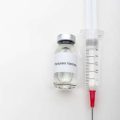Understanding Hair Loss Treatments in the U.S.
When it comes to battling hair loss in America, you’ll find yourself choosing between two main categories: prescription treatments and over-the-counter (OTC) options. Prescription hair loss treatments are medications or solutions that require a doctor’s approval, typically because they contain stronger or more targeted active ingredients. Common prescription products include finasteride (Propecia) pills and topical minoxidil with higher concentrations, as well as medicated shampoos like ketoconazole. On the other hand, OTC hair loss treatments are readily available on shelves at drugstores, supermarkets, and online without a prescription. These include lower-strength minoxidil formulas (like Rogaine), caffeine-infused shampoos, biotin supplements, and various serums marketed for thinning hair. Both types claim to slow down hair loss or even promote regrowth, but they differ not just in potency and regulation, but also in price and convenience. Understanding what’s out there is the first step before comparing which option gives you more bang for your buck—and ultimately helps you keep your hair where it belongs.
Breaking Down the Costs: What Are You Really Paying For?
When it comes to tackling hair loss, cost plays a huge role in deciding between prescription and over-the-counter (OTC) treatments. Let’s dig into what you’re actually spending your hard-earned money on, whether you’re picking up minoxidil at the local pharmacy or getting a finasteride script from your doc. Here’s a breakdown of the average prices, ongoing expenses, insurance factors, and typical out-of-pocket costs Americans face when choosing their hair loss game plan.
Average Price Comparison
| Treatment Type | Monthly Cost (Avg.) | Initial Doctor Visit | Insurance Coverage | Ongoing Expenses |
|---|---|---|---|---|
| Prescription (e.g., Finasteride) | $25–$75 | $50–$200 | Rarely covered for cosmetic use | Refills + periodic doctor visits |
| OTC (e.g., Minoxidil) | $15–$40 | N/A | Not covered | Continuous purchase of product |
Insurance Factors
Most insurance plans in the U.S. don’t cover hair loss treatments unless there’s a medical reason beyond male pattern baldness. That means both prescription and OTC options are typically out-of-pocket expenses. For prescriptions, you’ll need to factor in the cost of seeing a provider—either in person or via telemedicine—which can add up over time if follow-ups are required. OTC products cut out the middleman, letting you grab what you need off the shelf or online.
Ongoing Costs Add Up Fast
The truth is, neither option is a one-and-done fix. Both require consistent, long-term use to maintain results. Prescription meds often come with repeat doctor visits or renewal fees, while OTC solutions require you to stay stocked up month after month. Over a year, that can mean hundreds—sometimes thousands—of dollars invested just to hold onto your hair.
Typical Out-of-Pocket Expenses: Real-World Example
- Prescription route: First-year cost can hit $600–$1,200+ (including doctor visits and meds).
- OTC route: First-year cost usually runs $180–$480 depending on brand and usage.
- Add-ons: Some guys combine both for best results, which doubles up those ongoing costs.
The bottom line? While OTC options look cheaper upfront, prescriptions can carry hidden fees tied to medical oversight. Always weigh both sticker price and long-term commitment before pulling the trigger on any treatment plan.

3. Effectiveness: Do You Get What You Pay For?
When it comes to hair loss treatments, cost is only part of the equation. What really matters is whether you actually see results. In the U.S., both prescription and over-the-counter (OTC) options are widely available, but their effectiveness can differ dramatically—and that’s something you don’t want to gamble with when your hairline is on the line.
FDA Approval: Setting the Standard
The Food and Drug Administration (FDA) plays a key role in determining which treatments hit pharmacy shelves. For men, two big names stand out: finasteride (prescription) and minoxidil (OTC). Both have received FDA approval after rigorous clinical testing, which means they’ve been proven to work for a significant number of guys. Anything else—like herbal shampoos or vitamin gummies—hasn’t passed this gold standard, so be skeptical of bold promises without FDA backing.
Clinical Studies: The Hard Numbers
Let’s talk science. Prescription finasteride has shown impressive results in clinical trials, with most studies reporting that 80-90% of men either maintain or regrow hair over time. Minoxidil, available OTC as a topical solution or foam, usually helps about 40-60% of users slow down their hair loss or regrow some hair, especially if they start treatment early. These numbers are pretty solid compared to non-regulated supplements, which rarely show consistent benefits in real-world trials.
Real-World Experiences: What Guys Actually Report
If you spend any time on forums like Reddit’s r/tressless or talk to your buddies who’ve tried these treatments, you’ll hear similar stories: prescription meds tend to work better, but they can come with side effects and require a doctor’s visit. OTC minoxidil is easy to get and pretty effective for many men, though it requires daily commitment and patience—results often take 3-6 months to show up.
Bottom line? If you’re looking purely at effectiveness per dollar spent, prescriptions like finasteride generally offer more bang for your buck—but only if you’re eligible for them and okay with possible side effects. OTC options like minoxidil provide solid results for many guys, especially those just starting out or wary of prescriptions. Either way, stick with treatments that are FDA-approved and backed by real clinical data—you want to know your investment isn’t just going down the drain.
Accessibility and Convenience
When it comes to choosing between prescription and over-the-counter (OTC) hair loss treatments, accessibility and convenience are major deciding factors for most guys. In the U.S., getting your hands on these products can look pretty different depending on which route you take, so let’s break down what you’re really signing up for.
Doctor Visits vs. Walk-In Purchases
If you go the prescription route—think finasteride or prescription-strength minoxidil—you’ll need a doctor’s appointment first. That could be with your primary care physician or a dermatologist, and unless you’ve got a telehealth hookup, it usually means time off work, co-pays, and maybe even waiting weeks to get in. OTC options like Rogaine or generic minoxidil? Just stroll into any pharmacy, big box store, or even grab it while you’re grocery shopping. No awkward conversations, no scheduling headaches.
Where Can You Get These Treatments?
| Treatment Type | Access Point | Prescription Needed? | Typical Wait Time |
|---|---|---|---|
| Prescription | Doctors office / Telemedicine / Pharmacy pickup | Yes | Days to weeks (appointment + pharmacy fill) |
| OTC | Pharmacy / Supermarket / Online stores | No | Instant (in-person) or 1–3 days (online shipping) |
Refills and Ongoing Access
Refilling a prescription often means dealing with your doctor again after a few months or getting prior authorization from your insurance company. Some pharmacies offer automatic refills, but if your script runs out or insurance changes, expect delays. With OTC treatments, as long as you have cash or a credit card, you’re good to go whenever you run out—no questions asked.
The Rise of Online Options
The American market has seen an explosion of online services for both prescription and OTC hair loss solutions. Companies like Hims or Keeps make it easier to get a doctor’s approval virtually and ship meds right to your door—sometimes without ever leaving your couch. For OTC stuff, Amazon Prime delivers faster than most local pharmacies can fill a script. The bottom line: online options are making both types more convenient than ever before, but OTC still wins for pure speed and simplicity.
Key Takeaway for Guys Weighing Their Options
If convenience is at the top of your list, OTC treatments are the clear winner: no doctor visits, instant access, and easy refills. Prescription treatments might require more legwork upfront but can be streamlined through telemedicine and mail-order pharmacies—still not quite as hassle-free as grabbing a bottle off the shelf.
5. Hidden Costs and Considerations
When weighing the cost-effectiveness of prescription versus over-the-counter (OTC) hair loss treatments, it’s easy to focus on sticker price alone—but that’s just the tip of the iceberg. In my experience, there are hidden costs and indirect expenses that can seriously impact your wallet and your results. Let’s break down what you might not see on the price tag.
Side Effects: The Unseen Price
Prescription treatments like finasteride or oral minoxidil can come with a list of potential side effects—think sexual dysfunction, dizziness, or scalp irritation. Managing these issues may require additional doctor visits, lab tests, or even other medications to counteract unwanted reactions. OTC solutions like topical minoxidil tend to have milder side effects, but even simple scalp dryness can mean buying extra moisturizing products. Over time, these add-ons stack up.
Supplementary Treatments Add Up
No matter which route you take, most guys find themselves layering on more than one solution. You might start with a prescription pill and then add a thickening shampoo, biotin supplements, or special conditioners. Each extra product means more money out of pocket—and sometimes, it feels like you’re building an entire shelf dedicated to fighting hair loss.
Time Investment Is Money
Another hidden cost is your time. Prescription treatments often require regular check-ins with your doctor for refills and monitoring. OTC products are easy to buy at the drugstore, but applying them twice daily (and remembering to do it) takes commitment. Factor in commute times for appointments or the minutes spent massaging foam into your scalp every morning and night; that’s time you could spend elsewhere.
The Psychological Toll
This might sound soft, but don’t underestimate the mental energy spent worrying about whether a treatment is working—or dealing with side effects. Stress and anxiety aren’t billable line items, but they’re real costs when you’re trying to stick with a routine or dealing with disappointment if results are slow.
Long-Term Commitment Means Long-Term Spending
Hair loss treatments aren’t one-and-done deals; they’re long-term commitments. Stop using them, and any progress usually fades fast. That means budgeting not just for this month, but for years down the road—another hidden cost many guys overlook at first.
The bottom line? When comparing prescription and OTC options for hair loss, don’t just look at what you pay at checkout. Side effects management, supplementary products, time investment, and even the psychological toll all play into true cost-effectiveness over time.
6. Real Stories: American Mens Experiences
When it comes to battling hair loss, nothing speaks louder than real experiences from guys who’ve actually been through the process. I reached out to a few friends and colleagues across the U.S.—from Texas to Ohio—who have tried both prescription and over-the-counter (OTC) treatments. Their stories give a down-to-earth look at the actual costs, challenges, and results of each option.
The Cost Factor
Mike, a 34-year-old software engineer from Austin, shared that he started with minoxidil from his local drugstore. “It was about $20 a month,” he said. “Pretty affordable, but I had to buy it every month.” When Mike switched to a prescription finasteride through his doctor, the price jumped to nearly $80 a month without insurance. He found some online telehealth services offering generic finasteride for as low as $30 monthly, but always with an additional consultation fee.
Convenience vs. Commitment
James, a teacher in Columbus, tried both options. “OTC was easy—I just grabbed it off the shelf,” he explained. “But remembering to use it twice daily was harder than I thought.” With prescription pills, he only had to take one each morning, which fit better into his routine. However, getting the prescription meant extra trips to the doctor and dealing with insurance paperwork.
Side Effects and Results
Both men noticed some results but also ran into side effects. Mike mentioned minor scalp irritation with minoxidil but didn’t experience much regrowth until he combined it with finasteride. James had better luck with prescriptions but stopped after experiencing decreased libido—a well-known side effect of finasteride—which made him reconsider long-term use despite its effectiveness.
The Bottom Line
For these guys and others I talked to, cost-effectiveness wasn’t just about sticker price—it included how treatments fit into their lives, the hassle factor, insurance coverage, and how well they tolerated any side effects. Some found OTC products were cheaper upfront but less effective alone; others felt that paying more for prescriptions was worth it for better results—if they could handle the side effects. Ultimately, your mileage may vary, but hearing these firsthand accounts can help you weigh your own options based on real American experiences.
7. Making the Right Choice for Your Budget and Lifestyle
When it comes down to choosing between prescription and over-the-counter (OTC) hair loss treatments, there’s no one-size-fits-all answer—especially if you’re trying to balance cost, convenience, and effectiveness. From my own experience, I learned pretty quickly that what works for your buddy or the guy in the commercial might not work for you, both in terms of results and how much it actually costs to stick with it.
If budget is your top concern, OTC options like minoxidil (Rogaine) are usually more wallet-friendly upfront and don’t require a doctor’s visit or insurance hassle. You can pick them up at your local pharmacy or even order online. But remember, you’ll need to be consistent, and costs add up over time. Prescription treatments like finasteride offer strong clinical evidence and often more noticeable results for many men—but you’ll need regular check-ins with your doctor and possibly some lab work, which means extra time and money.
The real trick is weighing what matters most to you. Are you looking for ease of access? OTC might win. Are you after the best possible results, even if it takes a little more effort and expense? A prescription could be worth it. Some guys find success combining both (with their doctor’s guidance), but this approach will obviously raise your overall investment.
Think about your lifestyle, too. Will you remember to apply a topical twice a day? Or would a daily pill fit better into your routine? Don’t forget about side effects—no savings are worth it if you feel lousy.
Bottom line: Do your homework, talk with a healthcare provider if possible, and be honest about what you’re willing (and able) to spend—not just today, but over months or years. Hair loss is a long game; whatever treatment path you choose needs to be something you can realistically stick with.
Ultimately, the most cost-effective solution is the one that balances price, convenience, and actual results—for your specific needs and life. Don’t get swayed by hype or pressure from others. Make the choice that fits your budget and keeps you feeling confident in the long run.


